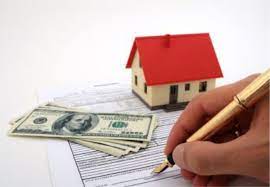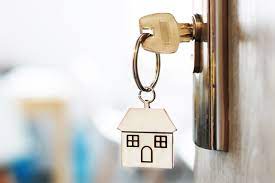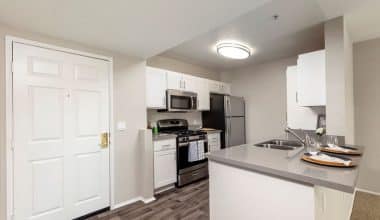The design of the building and the caliber of the updates are just two aspects that affect a home’s market value. During your real estate profession, you can be called upon to provide an opinion on a property’s value. Agents and brokers in the real estate industry can better serve their clients by mastering the CMA in real estate. This article explains how to go about a CMA report in real estate. Enjoy the ride!
What Is a CMA in Real Estate?
Home sellers can find optimal listing pricing with the use of a CMA in real estate. The “best” price won’t put the seller in the red or discourage potential buyers. A CMA in real estate can help buyers determine whether or not a house is priced competitively and, if so, how much to offer.
A CMA in real estate is a comparison of the subject property to others that are comparable in terms of location, size, and amenities. CMAs work best when they are based on comparable sales in the same neighborhood. Naturally, in a low-volume or rural real estate market, it might be challenging to identify homes that have sold within the past three to six months in the immediate vicinity. However, a formal evaluation may be the best course of action in such a situation.
CMA vs. Appraisal
A CMA in real estate is an assessment of a home’s value based on the sale prices of similar residences. With this ballpark figure in hand, you may begin price talks with potential buyers. An appraisal must be conducted by an appraiser who holds the appropriate state license. The appraiser will look at comparable houses in the same neighborhood. The home’s market value is then determined after a thorough analysis of current market conditions. However, lenders base their loan amounts on the property’s appraised value.
What Should A Comparative Market Analysis Include?
At the end of the day, a CMA will most likely include data on at least three or four similar homes. Your comps should be nearby recently sold residences with similar attributes to your property. Your home’s suggested listing price will be compared to the prices of recently sold homes in the area. Additional market data, such as average days on the market and price movements, may be provided by some brokers.
Elements of a CMA Report
The following are the elements of a CMA report:
- Age
- Condition
- Style (like Cape Cod, ranch, or colonial)
- Square footage
- Heating and cooling systems
- Extra amenities like a fireplace or pool
- Sales price
- Yard size
- Yard features (like landscaping or patios)
- Number of bedrooms
- Number of bathrooms
- Adjusted sales price
- Adjusted price per square foot
How to Do a CMA in Real Estate
Thinking of how to do a CMA in real estate? Here are some steps to take to do it:
#1. Start Early
A CMA in real estate should be made as early as practicable in the purchasing or selling transaction as possible. Before listing a property for sale, a comparative market analysis (CMA) can help you determine a reasonable asking price. After meeting with a client, a real estate agent may compile a comparative market analysis (CMA).
#2. Assess the Property’s Location
As a first step in performing a CMA in real estate, you can examine the property’s location. Things like parks, schools, and restaurants in the area can all have an impact on a home’s asking price. Housing prices may be significantly influenced by these factors since people are willing to pay a premium to be near them. Consider the walkways, trees, and the state of the surrounding homes when describing the area as a whole. As you progress in your real estate profession and gain familiarity with the communities and the values held by local homeowners, this process may become second nature to you.
#3. Collect Details about the Property
The age and square footage of a house are two examples of fundamental information that can be included in a listing. A more detailed CMA in real estate could be the result of additional information gathered during an in-person visit. Finishes, condition, layout, landscaping, and upgrades are just a few of the aspects that might be considered when determining a home’s value.
#4. Find Comparable Homes
The best results can be achieved by comparing your house to three to five others recently sold within a mile of yours. Due to the rapid fluctuation of typical prices, it is recommended that you only consider homes that have sold within the last three to six months. This may be simpler to do in certain places than in others. You may find more uniformity in the home designs in a newer neighborhood. Properties in other places may vary greatly from one another, so it’s important to select properties that are as close as possible to the one you’re selling.
If you live in a rural location or a place where there aren’t many homes for sale, you may need to broaden your search area beyond the recommended mile. When possible, try to move to a nearby area with a similar feel. You can make changes as needed to come up with reliable predictions.
#5. Consider and Calculate for Adjustments
You may account for variations between your home and the comps by looking at the monetary worth of each feature. One indicator is the value added per amenity, such as the number of bedrooms in your region. These figures may be accessible from a real estate agency in your area. Another option is to look up comparable home prices in the area and use that number. Those figures may change based on where you live. Real estate agents use phrases like “superior” and “inferior” to rate the features of comparable homes when making modifications. The quality of an extra bedroom is higher than that of a smaller bathroom.
Adjustments can be calculated by modifying the value of the similar home used in the calculation. If a similar home has three bedrooms and the one you’re selling only has two, the other home is of higher quality. That house probably sold for more to someone else. The value of an additional bedroom can be subtracted from the comparable sale price to arrive at the new price.
#6. Determine the Sold Price per Square Foot
The adjusted price per square foot can be determined by using the adjusted price of each similar home. Each home’s price was divided by its square footage to arrive at this figure. You can make more informed comparisons of the properties by utilizing the revised prices you determine. The adjusted prices can give you a general idea of what a square foot costs, but each sale is different. At times, the cost of a house might be influenced by several extraneous factors. It’s possible that the buyer paid cash for the house, or that the seller gave a relative a special deal.
If you need more information to set a fair price, you can get in touch with the listing agent of a similar home. You can put a special notation on your CMA in real estate to emphasize this dissimilarity.
You can impress your clients with a well-designed CMA report by using one of several available programs. Make it easy for your clients to make direct comparisons between the comparables by grouping them. The three to five comparable properties are typically displayed side by side in a chart on the cover page of a CMA. In the space below, please list the sales price, adjusted price per square foot, and a photo of each comparable. Your client will be able to quickly and simply compare the data in this manner.
How to Get a CMA from a Real Estate Agent
When meeting with a potential client to list their house, most real estate agents will provide a complimentary CMA. It’s a way for the agent to demonstrate their expertise and earn your trust before doing business with you. However, not all CMA reports are created equal in terms of quality and accuracy. You should consult a real estate agent who is well-versed in the local market if you want to maximize your chances of success. We advise using a free tool that matches you with pre-screened real estate agents based on your needs.
How Does a CMA in Real Estate Benefit a Customer
It’s easy to see why a Comparative Market Analysis (CMA) might be helpful for sellers. They can obtain a better picture of their home’s current value by comparing it to similar houses that have recently sold or are now under contract. But purchasers can also benefit from using a CMA as a benchmark. They don’t want to offer too little, but they also don’t want to pay too much. Also, they can avoid both of these dangers with the aid of a CMA. They may gauge the level of competition in the market for the house they’re interested in, and they can also set a firm limit on how much they’re willing to pay.
Whatever the situation may be, objectivity is what buyers of all stripes crave. They need to have absolute assurance that the valuation method used to determine a home’s worth is sound and based on reliable data. Why? Why? Because it calms their nerves and encourages them to take action in a potentially dangerous situation.
How Does a CMA in Real Estate Benefit a Real Estate Agents
A CMA in real estate is a fantastic tool for establishing your worth and earning respect from others. By displaying not only raw data but also your analysis, interpretation, and conclusions based on that data, you’re essentially saying, “I’m the local expert, I’ve put in the hard work to understand this market at a granular level, and I’m bringing a kind of value that no other agent can provide.”
In other words, a CMA will offer you the assurance you need to negotiate like a pro. Objectivity is stronger than subjective judgment, so you may rely on it. If you have solid evidence to back up your offer or price, it will be difficult to reject it. As part of your direct mail campaign, you may send a CMA to potential clients. Despite what they might assume, homeowners are rarely aware of what’s happening in the local housing market. Few people would be able to tell you the current value of their home, and even fewer would be prepared for the actual selling prices of properties in their area.
A CMA in real estate (even a brief one in a postcard, brochure-style pamphlet, or email) might assist prospects in seriously considering making a move. Perhaps all it takes to convert a prospect into a lead, and then into a customer is to offer that kind of information to them at a moment when no other agent would.
Is Comparative Market Analysis Accurate?
An excellent tool for real estate brokers to use when estimating a home’s value is a CMA in real estate. While a CMA in real estate is often reliable, it does not ensure that your home will sell for the suggested price.
In real estate, CMA reliability is highly dependent on the quality of the selected comparables. The outcomes vary depending on the type of competition. This emphasizes the significance of making adjustments for differences while keeping the comparisons as similar as possible. The most beneficial outcomes can be anticipated with this approach. Still, the market is fluid, so the final sales price of your home may vary from the asking price.
Can You Get A CMA in Real Estate For Free?
You may get a feel for an agent’s work before committing to working with them by taking advantage of this free service, which is provided by most agencies. To find real estate agents who are experts in your area and the market, it is important to know what goes into a Comparative Market Analysis (CMA).
Be mindful of choosing the agent with the highest pricing when performing a comps analysis as part of the interview process. When sellers do this, they often learn the amount was inflated, to begin with.
Purpose of a CMA in Real Estate
Real estate agents and brokers can indeed get by without conducting a CMA, but there are ways in which doing so might improve their productivity. An agent may conduct a comparative market analysis to suggest a selling price that strikes a good balance between profit maximization and buyer interest. A CMA in real estate is a useful tool for brokers who want to help their clients get the best deal possible. In addition to streamlining the closing process for you and your clients, conducting a CMA in advance can help you set a price that is as close as feasible to the final assessment.
Is a CMA the Same as an Appraisal?
A CMA in real estate provides you and your agent with information on the selling prices of properties that are comparable to yours and are located in the same area. In contrast, an appraisal provides you with an expert opinion on the value of your property.
How Do You Calculate a CMA in Real Estate?
If you multiply the lowest and highest comps’ prices per square foot by the total square footage of the subject property, you’ll get your CMA range. Common Measurement Average Result. The number of square feet of the subject property multiplied by the price per square foot of comparable sales = minimum acceptable offer price.
Final Thoughts
A CMA is a useful tool for real estate agents to use when trying to convince house sellers of the value of listing their clients’ homes for sale. This is done by utilizing the appropriate resources, identifying comparable properties, collecting data, and compiling it all into an organized, eye-catching, and straightforward CMA report. Listing and real estate market data may be utilized to convert listing leads and produce new ones, thus learning how to do a comp report is crucial.
Related Articles
- WHAT IS A CMA IN REAL ESTATE: What It Is & How to Create One
- CERTIFIED MANAGEMENT ACCOUNTANT: How To Become a CMA
- HOW TO BECOME A CERTIFIED MANAGEMENT ACCOUNTANT: Detailed Guide
- Comparative Market Analysis: Real Estate Management
- ACCOUNTANT: Duties, Roles, Salary & Types
- BEST HOMEOWNERS INSURANCE IN FLORIDA 2023






